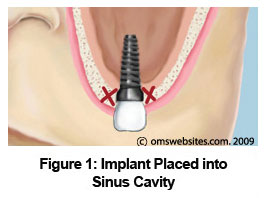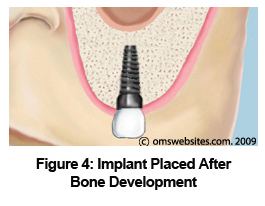183 Genesee Street
Auburn, NY 13021
Sinus Lift
Why do I need a Sinus Lift?
When you are getting implants, the key to their success is the quality and quantity of the bone where the implant will be placed. The most difficult area to place dental implants is in the upper back jaw because there is insufficient bone and is in very close proximity to your sinus. If you have lost bone in the upper back jaw due to tooth loss or periodontal disease, there may not be enough bone to place a dental implant (see Figure 1).
A sinus lift (or sinus augmentation) can correct this issue by lifting the sinus floor and promoting the development of new bone for dental implant placement.
What is Involved in getting a Sinus Lift?
There are many techniques that may be used to raise your sinus to allow for new bone growth (see Figure 2). A common technique is exposing the bone by incision. A small circle is then cut into your bone. This piece of bone piece is placed in the sinus cavity, and underneath the space is filled with a bone graft material (see Figure 3). Your surgeon will explain what types of material can be used for the bone graft which will regenerate lost tissue and bone.
Lack of Bone Between Top of Ridge and Sinus Lower Sinus Cavity is Filled with Bone Material


The incision is then closed and natural healing is allowed to begin. Usually the bone will need to develop from four to 12 months, depending on your individual needs, before an implant can be placed (see Figure 4).
What are the Benefits of a Sinus Lift?
Sinus lifts have shown to dramatically increase your chance of implant success that will last for years. Most patients experience little discomfort during the sinus lift procedure.
Will I be Asleep During the Procedure?
You have several anesthetic options when undergoing a sinus lift.
- Local Anesthesia
- General Anesthesia (asleep)
- Intravenous Sedation
- Nitrous Oxide Sedation (laughing gas)
We will discuss with you the various anesthetic options during your consultation.




